8
Our personal story has always been interlaced with our family story. To understand the present, we need to take a look at the past from different angles – our family tree, photographs, family stories, food, unique traditions, and more. Studying family coats of arms – which we can think of as a "family logo" - enables us to obtain a visual message regarding the history of our nuclear and extended family. A story hides behind every detail, and all the details comprise our family-personal mosaic which, among other things, also teaches us about the story of the Jewish people and Jewish communities around the world. The creation of a family crest is an opportunity to investigate and document our family history, create a message in the present, and pass the inspiration on to the next generation. In this lesson we will define terms, cover the history of family coats of arms, become familiar with and analyze emblems and images found in Jewish texts and how we can create them today.
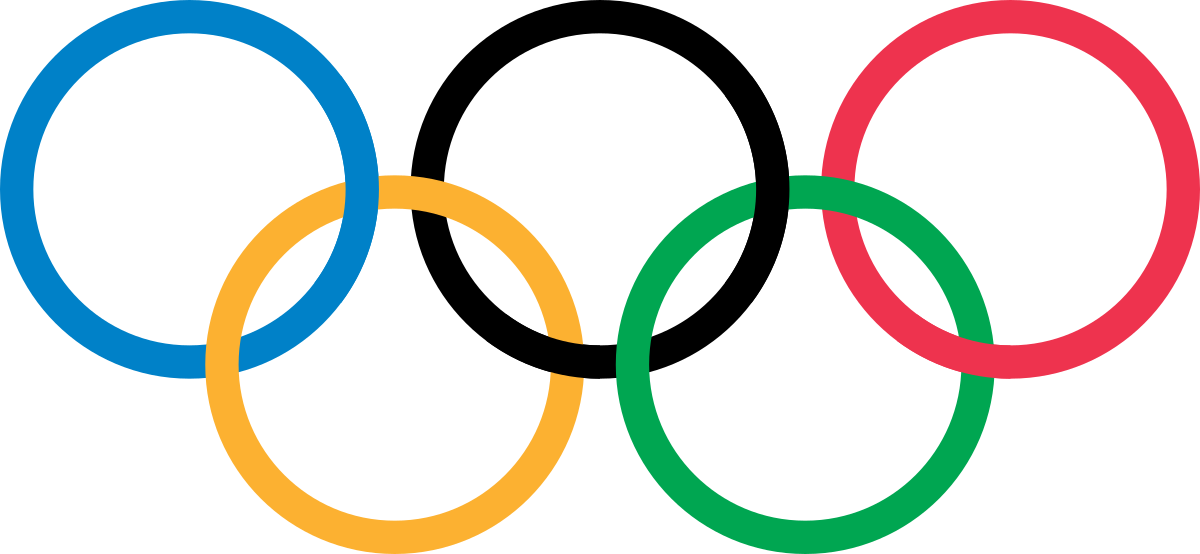

Heraldry is a historical discipline that traces family coats of arms and their visual design and display, including both family coats of arms as well as aristocratic coats of arms in general. Aristocratic, meaning the ruling class, coats of arms were already in use in the ancient world, and even in earlier periods in Egypt and ancient Rome. However, they reached a peak during the Middle Ages. A family coat of arms was often created by the family itself or it was bestowed on the family by the ruling regime. It tells us about the family's social standing and lineage and the occupations and crafts that the members of the family are engaged in. It tells a unique story about their worldviews and is a guiding motto for the next generations.
Before we begin to study coats of arms, let’s look at a universal emblem that most of us are familiar with – the Olympic logo.
The Olympic Games logo consists of five interlocking rings whose colors are blue, red, black, green and yellow – set against a white background. The five rings stand for passion, work ethic, victory, faith and sportsmanship. The logo was designed in 1912 by Baron Pierre de Coubertin, the founder of the modern day Olympic Games. According to de Coubertin, the colors were chosen because, at the time, at least one of them appeared on the flags of all the nations in the world. Nowadays, the International Olympic Committee believes that the logo reinforces its position that the Olympic Games are global and every country is invited to participate in them.
The emblem of the State of Israel is a shield with a seven-branched menorah (candelabrum) in the middle. There are olive branches on both sides and the word "Israel" appears on the bottom in Hebrew, the language of the Jewish people. The emblem was designed by the Shamir brothers in 1949. Their inspiration may have come from the Book of Zechariah: "…and behold [there was] a candelabrum all of gold, with its oil bowl on top of it, and its seven lamps thereon, with seven channels to each of the lamps on top of it. And [there were] two olive trees near it, one on the right of the bowl and one on its left." (Chapter 4: 2-3).
The menorah on the emblem is identical to menorah relief that appears on the Arch of Titus. That relief depicts a procession of slaves and soldiers coming back to Rome after the Roman victory in Judea and the destruction of the Temple in Jerusalem in 70 CE.
The inclusion of the Roman relief was intended to represent the return of the menorah to its original location – Jerusalem – and the restoration of Jewish sovereignty in Israel. The olive branches on both sides of the menorah are a symbol of peace.
Family coats of arms were prevalent in the Christian world, but, starting in the Middle Ages, quite a few belonging to Jewish families were also recorded.
There are guidelines that govern the design of a family coat of arms. Most of them include an exterior frame (the "heraldic shield"), inside of which there are symbols and decorations that depict the family code. A motto and sometimes the family's name will appear either in the upper or lower section of the coat of arms, written on a special ribbon intended for that purpose. The coat of arms often consists of a variety of colors, which also represent different ideas.
Family coats of arms exist worldwide. However, when it comes to Jewish families, the meanings of the symbols and motifs were at times influenced by Jewish traditions. The coats of arms could also contain verses from the Bible or other Jewish texts. For that reason, their designs may differ from those of other families.
Here, for example, is a partial explanation of the elements that comprise the Rothschild family coat of arms. The coat of arms consists of a shield supported on both sides by a pair of golden animals. Above the shield is a crown of apples and below it a motto consisting of three words in Latin that mean unity, integrity and industry. Those words stand for the family's values and its motto.
The four quarters of the shield contain engravings of an eagle, a lion and two bent arms holding five arrows. The lion and the eagle allude to the family's strength and power. The arm represents Mayer Amschel Rothschild, who founded the family's financial empire. The arrows signify his five sons who settled throughout Western Europe. There is a small shield in the middle of the large one which contains an engraved round-shaped hat. In the Middle Ages, Ashkenazi Jews were forced to hang a sign in front of their homes and wear a special hat so they could be easily identified. The hat on the shield is a Jews' hat – a symbol that used to be a stigma and now indicates the Rothschild family's Judaism. The sign that used to hang in front of the family's home was red. The word for red in German is Rot – and the word for sign in German is Schild. Thus, years later, that red sign became the family name – Rothschild.
Let’s look at another family shield: The Cohen-Vital Family. In the center of the symbol is a tree symbolizing the tree of life. The distinguished surname Cohen is a proud sign of ancient Jewish culture. The surname Cohen is an occupational surname for a priest, and it comes from the Hebrew word ‘kohen’. Traditionally, priests were considered to have been members of a hereditary caste, descended from Aaron, the brother of Moses. The word ‘vita’ in Italian means life, hence the tree of life. The hands on either side of the tree are showing the gesture for the priestly blessing that the priests make over the people of Israel, alluding to the priestly family. The shield is adorned with a quote from the Book of Proverbs, "Find a Woman."
Let’s look at the family crest of the Montefiore Family. Most parts of the emblem are characteristic of the emblems of British noble families, such as the lion and deer, the armor and helmet of the knights above, the crown, plant branches, ribbons, turtles and more. What is special about Montefiore's emblem is, first of all, the Hebrew text on the two blue flags: Jerusalem, as well as elements of the landscape of the country and Judaism - mountains in the desert, date trees, Stars of David, and even a Hamsa. On the white ribbon below is written in black letters the Montefiore family slogan "Think and Thank". Usually the British coat of arms consists of, among others, a lion and a unicorn, Montefiore placed the unicorn with a deer in the family coat of arms, possibly due to the "Land of the Deer" and "The Deer Israel", and the lion, of course, resembles the cub of the lion of Judah. The cedar tree in the middle symbolizes strength and justice – the Temple was built of cedar wood. The hills are flanked by a cedar tree—a mountain and flowers. The name Montefiore in Italian means “mountain of flowers’. The open helmet at the top of the shield symbolizes a high degree of nobility.
We can see the way family crests can change over time by looking at the family crest of Raba Family and then the Glico and Raba Family. The unification of two families can be seen in the symbols after marriage was customary in the general population as well as in the Jewish community. Glico, in Italian, means rooster and therefore the coat of arms of the Glico family shows a rooster as well as the inscription "coat of arms of a household" symbolizing a family lineage. In the family reunion, it seems that the image of the lion also appears, symbolizing, among other things, belonging to the Jewish people, belonging to the tribe of Judah and the Kingdom of the House of David, and longing for the Messiah.
As you saw when analyzing theses different family emblems, one can examine the different elements that make up the emblem – plants and animals (including magical creatures like unicorn, two-headed eagles, etc.), natural forces, Jewish features, zodiac signs, various words that receive visual meaning (tree of life, red sign, etc.), family traits (number of children), occupations, the motto adopted by the family, etc.
The seven species, and in particular the pomegranate, the tree of life, Star of David, lions, musical instruments (violin), menorahs, hamsas and many other symbols are motifs that appear in different cultures. There are also special symbols associated with Jewish heraldry such as the Priestly Blessing, the symbol of the Levites (ritual washing of the hands), the Torah or the Ten Commandments. Other examples come from the circle of life or the Jewish calendar - Sabbath candles, menorahs, challahs, wedding canopies, tefillin, shofars, Torah crowns, matza, the four species, sukkahs, dreidels, the Temple pillars (Boaz and Jachin), Torah pointers, head coverings (kippot, Jews' hats), vests / breastplates, Hebrew letters, and many other symbols and features
Tishri-Libra Cheshvan-Scorpio Kislev-Sagittarius
Tevet- Capricorn Shevat-Aquarius Adar-Pisces
Nissan-Aries Ayar-Taurus Sivan-Gemini
Tammuz- Cancer Av-Leo Elul-Virgo
The symbols of the Twelve Tribes as well as quotes and verses from the Torah and other Biblical writings which commonly talk about family values, for example, verses from Proverbs, Ecclesiastes, the Ethics of the Fathers, are also recurring motifs in Jewish crests. Each of the 12 Tribes had distinct characteristics: some were warring tribes, like Benjamin, Gad and Dan; some were royal tribes, like Judah and Ephraim; Issachar was a tribe of scholars; Reuven was a tribe of shepherds; Asher was a tribe of farmers; Zevulun was a tribe of traders and seafarers; and Levi was a priestly tribe. Based on the accepted count, the number of tribes is identical to the number of months in the year and the number of zodiac signs. Each tribe had a different colored flag which bore an emblem as well as a particular gemstone that was engraved on the breastplate of the High Priest. The color of the flag matched the color of the gemstone that was unique to that specific tribe.
You can use the table at the top to help you tie the tribes to the Hebrew calendar to the Zodiac:
We have now become acquainted with examples of motifs and symbols that are frequently found in Jewish heraldry. Please remember that these are only examples and when you create your own family coat of arms, there is a wide range of additional options and symbols to choose from.
To help you get started, remember that we can begin to make our family coat of arms by looking at shapes of shields, ribbons and a variety of images and symbols you can choose from in order to create your own family coat of arms.
First of all, you have to choose the desired shape of the heraldic shield that best suits your family.
After choosing the heraldic shield, select a ribbon on which your family motto will be written.
Now that the frame and the ribbon have been chosen, we can go ahead and select the images.
You can add images that fit your vision, or the vision you agree on after you consult with your parents and other family members, check the Internet, draw your own images, etc.
After arranging and agreeing about the content of your coat of arms, you can now color the images.
And in the final stage - write your family motto on the ribbon and place it on the top or the bottom of the coat of arms.
You can always receive inspiration from the coats of arms that we examined and analyzed at the beginning of the workshop.
The amazing Coat of Arms for your family can be part of your My Family Story project and/or form the foundation of your entry in the My Family Story competition. We invite you to continue designing your coat of arms and telling your family story together with your extended family.


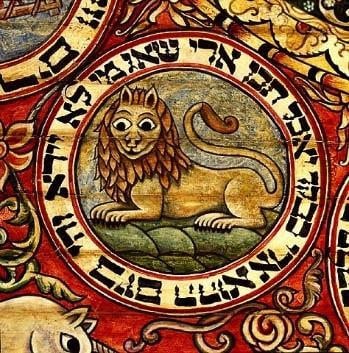
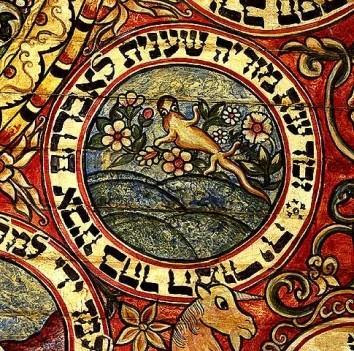
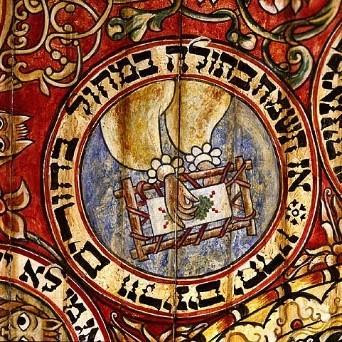


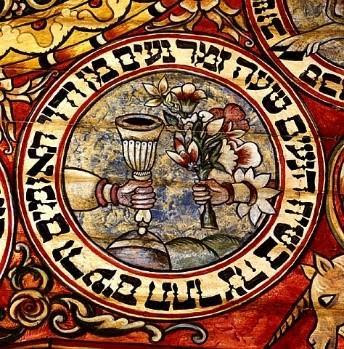
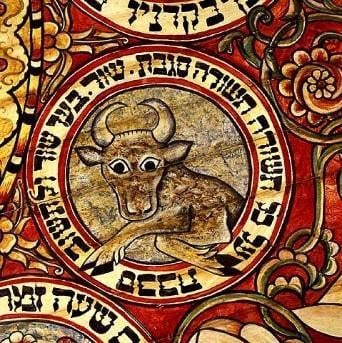
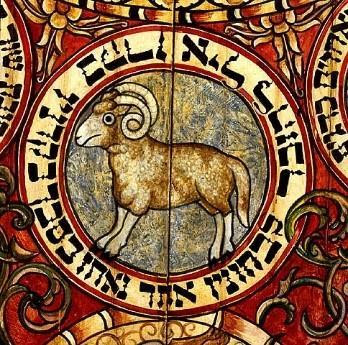


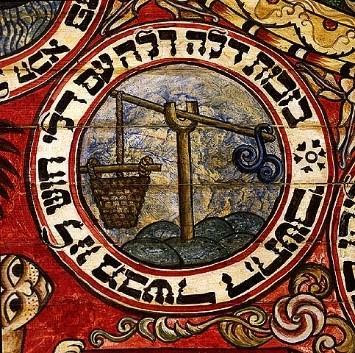
You can design your family crest on the computer using the following site: Family Crest or https://fcrest.anumuseum.org.il/